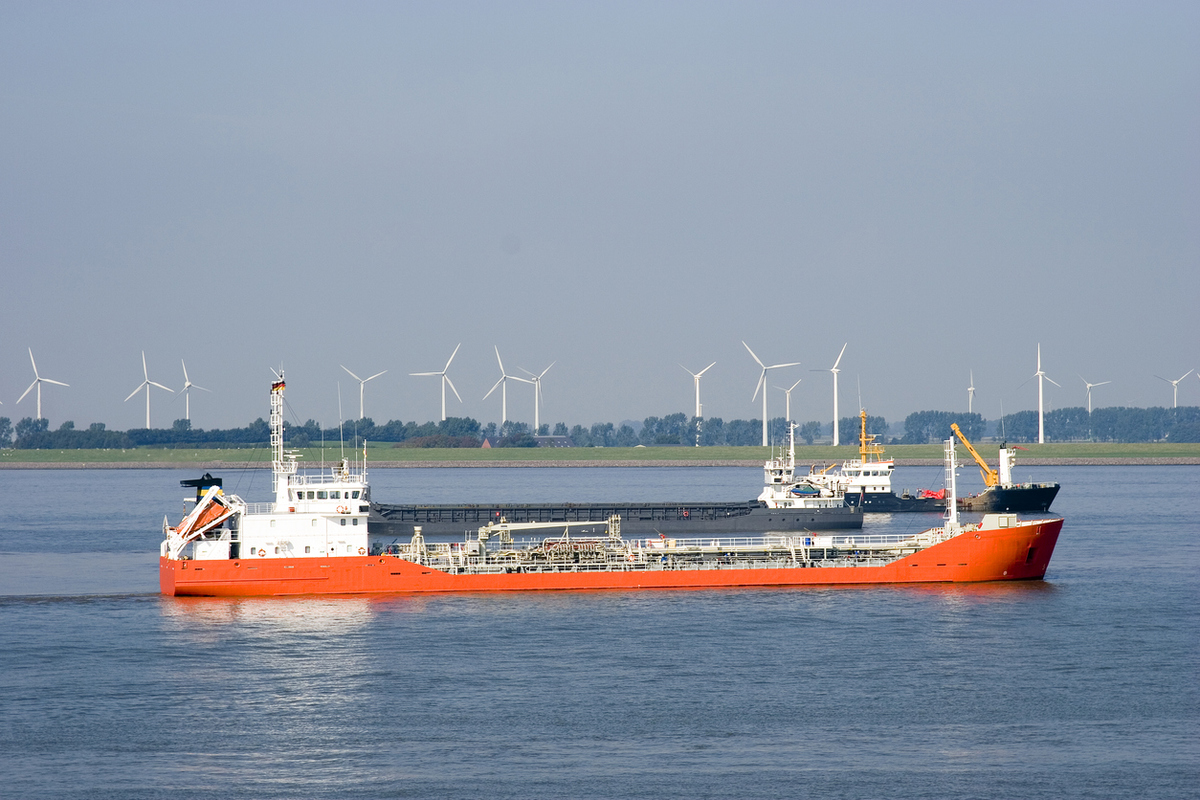The Week in Alternative Fuels 9 February 2024
From hairy GHG goals to Liberia-backed carbon capture and first-mover pooling advantages, this week had a lot of alternatives on display.
 PHOTO: Oil barges and support vessel with wind turbines in the background. Getty Images
PHOTO: Oil barges and support vessel with wind turbines in the background. Getty Images
It’s IMO submission season, the time of year when member states and industry associations make their cases with analysis and arguments to the global maritime regulator.
Liberia has thousands of vessels flagging its national colours and run on carbon-rich fuels. In its submission to the IMO, it backs onboard carbon capture and points to a system developed by Seabound. The tech startup firm has previously claimed its system can capture up to 95% of a ship’s carbon dioxide by trapping the gas in pebbles that can be stored onboard and discharged in ports.
Liberia's IMO submission cited a 78% carbon capture rate for Seabound, which it hailed as “one of the first examples to demonstrate that OCCS [onboard carbon capture system] is a viable technology.”
If this carbon capture tech becomes proven across vessel types at scale and at an attractive price tag, it could help prolong the lifetime of conventional oil-based fuels in the face of tighter and tighter carbon budgets towards net zero by 2050.
On a more regional level, the European Commission has recommended a 90% cut in GHG emissions by 2040. That’s across sectors, but it includes shipping, and it’s a significant step up from Fit for 55 (55% cut by 2030), knowing that these reductions get incrementally harder after the first bits of heavy lifting have been done.
Shipping has FuelEU Maritime’s seemingly smaller 32% GHG intensity reduction target for the energy used on board ships for 2040, but that’s compared to a 2020 baseline year.
A cross-sectoral upping of the climate ambition ante poised to stimulate a renewables expansion and spur green hydrogen production on the continent, the Commission reasons. That could in make more green hydrogen-derivative fuels like green ammonia or methanol available, also for bunkering.
Not many, but a few daring owners, have ordered ammonia-capable ships now. DNV recorded two orders in January, for a total of 13 orders for delivery towards 2026. Wartsila’s recent ammonia-fuelled engine launch and MAN Energy Solutions’ incoming model have sent positive signals about more technological maturity, while green ammonia’s longer-term production costs look attractive, according to several researchers like Tristan Smith at UMAS.
Methanol had another strong month with 23 orders. More announced methanol plants and an attractive pooling mechanism in FuelEU Maritime - which also applies to green ammonia - will no doubt have influenced their decisions. Just one ship running on the green versions of methanol, ammonia or methane can cover the compliance costs of 44-46 VLSFO-fuelled ships towards 2030, and of 14-15 VLSFO-fuelled ships in the following five years, according to a recent report by the Mærsk Mc-Kinney Møller Center for Zero Carbon Shipping.
This pooling mechanism contributes to create first-mover incentives that are reflected in DNV’s growing alternative fuels numbers.
In other headlines this week, the Port of Barcelona reported a doubling of its LNG bunker volumes between 2021 and 2023.
Unigas said it tested seven biofuel blends ranging from B30 to pure B100 last year, with GoodFuels supplying its ships.
Emulsion fuel has never really taken off, despite a premise of smooth sailing on it with fewer emissions. But emulsion fuel developer Quadrise has now struck a breakthrough deal with Cargill and MAC2 to deliver its fuel for bunkering in Antwerp.
And looking ahead to 2035, that the target year for the ports of Stockholm and Turku to have a green shipping corridor with zero-emission ships up and running. Viking Line is a backer of the corridor. The Finnish ferry company hasn’t yet specified which energy forms it will rely on to get closer to carbon neutrality, but it’s one to watch.
By Erik Hoffmann
Please get in touch with comments or additional info to news@engine.online





